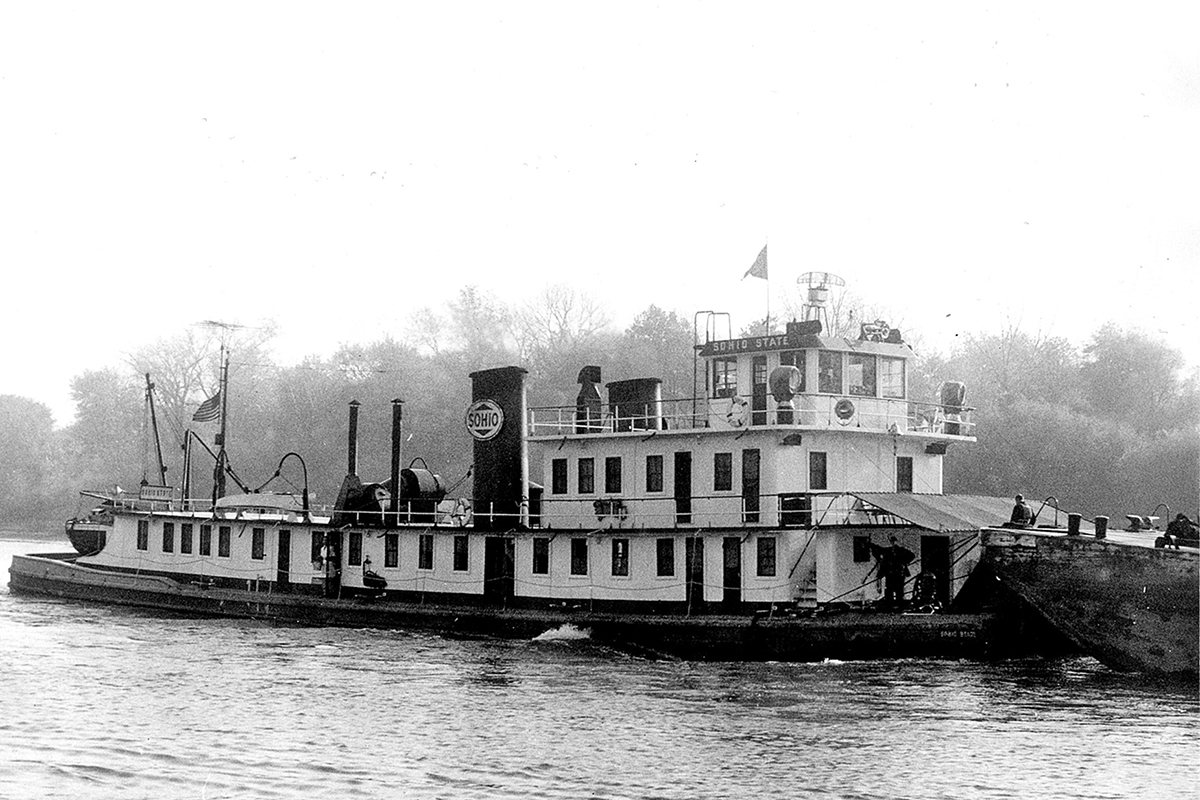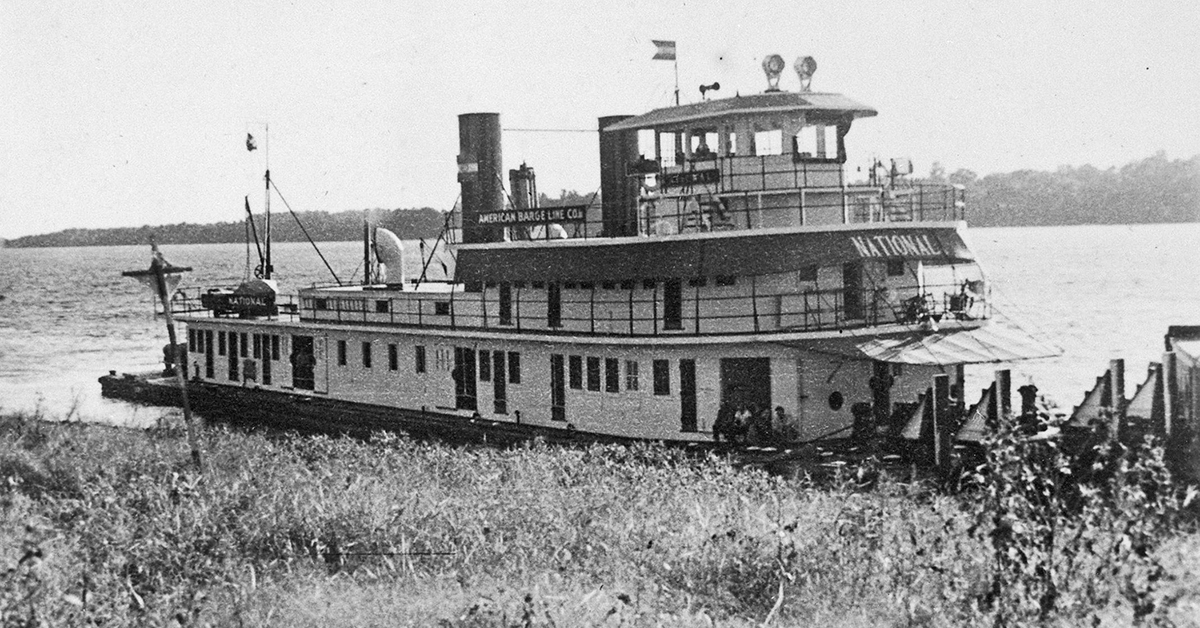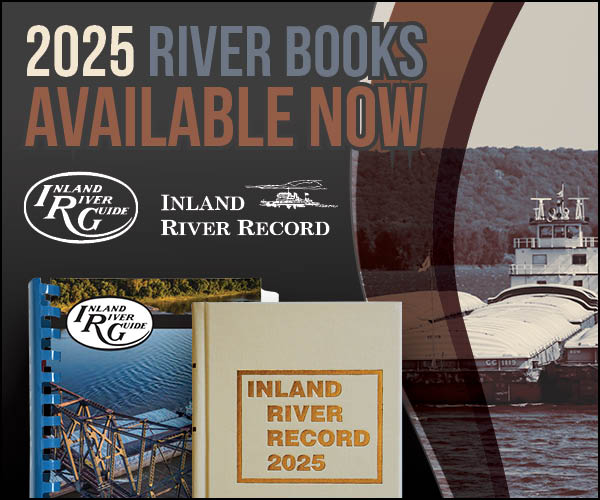This column has previously detailed two towboats built by the fledgling Jeffersonville Boat & Machine Company that eventually morphed what’s now commonly known as “Jeffboat.” Those boats were the Progress (See The Waterways Journal, January 22, 2024) and the Patriot (See WJ, December 23, 2024).
American Barge Line (ABL), forerunner of present day ACBL, was formed in the late 1920s when W.C Kelly teamed up with Andrew and Patrick Calhoun. The new company began with several new diesel vessels from the Kelley fleet, which were supplemented by some larger steam sternwheel boats throughout the late 1920s and 1930s. In 1938, ABL formed Jeffersonville Boat & Machine at Jeffersonville, Ind., on a site that previously had been the M.A. Sweeney & Brothers shipyard, which closed in 1920.
Treadwell Construction Company of Midland, Pa., built the hulls for the Progress and Patriot in 1939. The hulls were towed to Jeffersonville, where the boats were completed. The vessels measured 160 feet by 40 feet and had 2,000 hp. from a pair of Cooper-Bessemer diesels. In 1940, Jeffboat built their first complete towboat for ABL. That boat, named National, was very similar to the Progress and Patriot in appearance but had slightly different hull dimensions at 160 feet by 34.5 feet.
The National also had different engines than the earlier boats—a pair of National Superior 80-M-8 direct reversing diesels that produced 1,600 hp. As with the previous boats, the superstructure consisted of a full-length main cabin and a shorter cabin on the second deck, surmounted by a raised pilothouse with angled front corners. Two tall, stately smokestacks rose from an engine room skylight aft of the upper cabin.
In July 1948, the National was sold to Sohio Petroleum (Standard Oil of Ohio). While under this ownership, the name was never changed. In May 1951, the boat was sold to The Ohio River Company of Cincinnati, Ohio, and renamed T.G. Gerow. The Ohio River Company utilized the Gerow primarily on the Illinois River. The radio call sign was “WA 8550.”
In 1963, the T.G. Gerow was sold to River Marine Service, Paducah, Ky. This company later became affiliated with Econo-Flo Flour Service and was eventually headquartered at Salina, Kan. By 1973, the Gerow had been retired, and a paragraph in the June 1973 issue of the S&D Reflector stated that it was serving as a “floating clubhouse at Little Rock, Ark., owned by J. Wythe Walker.”
Later, the Gerow served as an office for American Boat Company. After that, Jim Jumer purchased it to use as administrative offices for his casino and entertainment “fleet.” It was scrapped in recent years by Hamm’s at Chillicothe, Ill.

The Other National
A company called C.S. Schmidt built an all-steel boat in Houston in 1942 with a hull that measured 149 feet by 30.8 feet. That vessel had 1,300 hp. from a pair of engine-room-controlled National Superior Model KNB 8-cylinder direct reversing diesels. The boat, named Edgar C. Johnston, was built for P&S Towing Company of Houston and operated by Johnston Towing of Longview, Texas. The vessel had somewhat of a plain and boxy look with a nearly full lower cabin, a smaller upper cabin and a square pilothouse above that. There were two tall smokestacks behind the upper cabin. The vessel later was chartered to, and then sold to, Sohio Petroleum Company, which renamed it the Sohio Memphis in 1944. In 1947, the name was changed to Sohio State. In 1959, while under bareboat charter to Ray Towing Company, Milford, Ohio, it was renamed National. In 1963, it was sold to Elk Towing Company, Point Pleasant, W.Va., one of the companies headed by Capt. Robert H. Bosworth. Five years later, the Bosworth companies were sold to M/G Transport Services of Cincinnati. Throughout this time, the call sign of the National was WC 4867.
In April 1974, the National was sold to South Point Barge Company, South Point, Ohio. That company intended to rebuild and repower the boat. It was partially dismantled, but due to other projects, the rebuild never occurred. This writer was able to wander through the boat while it was awaiting its fate at South Point. There were vestiges of past dignity, such as nice porcelain tags over doors and a roll-top desk in the “captain’s office.” The late Capt. Tom Herdman told me about a unique engine control system in the pilothouse of the National, of which he was not a fan. Evidence of that system was still there when I toured the vessel. There was a wheel mounted on each side where the pilot would stand, and the wheels were connected to each engine by cable. Turning the wheels so far in each direction would start and control the big direct-reversing engines.
The hulk of the National was ultimately sold to Valley Inc., Millwood, W.Va., which removed all but a small part of the lower cabin and utilized the hull as a crane barge. The upper cabin and pilothouse were at one time in the Valley shipyard at Millwood.




